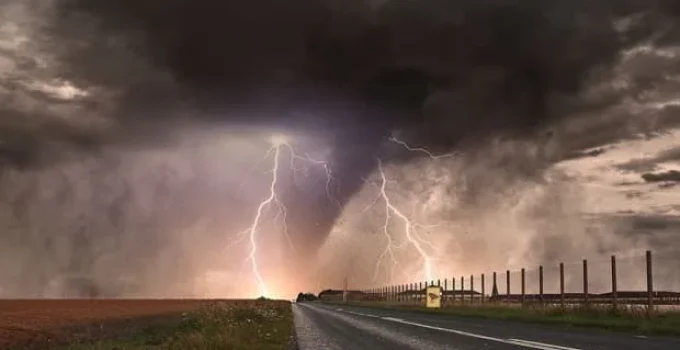How Do Meteorologists Predicts Tornadoes?
Tornadoes are powerful, fast, and dangerous. They can destroy buildings, flip cars, and appear with little warning. So how do meteorologists predict them in time to keep people safe? The answer is part science, part technology, and part experience. Predicting tornadoes isn’t easy, but thanks to radar, weather balloons, satellites, and storm spotters, scientists are getting better at it every year.
📘 Dive Deeper
- Why Tornado Prediction Matters
- The Tools Meteorologists Use
- What Is a Tornado Watch vs. Warning?
- The Role of Doppler Radar
- Can Tornadoes Be Predicted Exactly?
- 🎯 Final Thoughts
- 📚 References
⚠️ Why Tornado Prediction Matters
Tornadoes can form in just minutes and cause massive damage. Because of their speed and power, it’s crucial to give people enough time to find shelter. Early warnings save lives.
📊 Statistic: According to the National Weather Service, over 1,200 tornadoes strike the U.S. each year, with most happening in “Tornado Alley,” where warm and cold air masses often meet [1].
Meteorologists aim to warn people ahead of time using science, models, and technology to understand when conditions are likely to produce a tornado.
🧰 The Tools Meteorologists Use
To predict tornadoes, meteorologists use several important tools:
| Tool | Purpose |
|---|---|
| Weather balloons | Measure temperature, humidity, and wind at different altitudes |
| Doppler radar | Tracks rainfall and sees rotation in storms |
| Satellites | Show cloud patterns and storm development from space |
| Computer models | Simulate the atmosphere and predict future weather |
| Storm spotters | Report real-time conditions from the ground |
Meteorologists combine all of this data to make educated forecasts about whether tornadoes could form.
⏱️ What Is a Tornado Watch vs. Warning?
One of the ways meteorologists keep the public informed is through alerts issued by the National Weather Service (NWS):
- Tornado Watch: Conditions are right for a tornado to form. Be alert!
- Tornado Warning: A tornado has been seen or detected on radar. Take shelter immediately!
🚨 Did You Know? On average, a tornado warning gives people about 13 minutes to find shelter [2].
These warnings are based on both radar data and reports from trained spotters in the field.
📡 The Role of Doppler Radar
One of the most powerful tools for tornado detection is Doppler radar. Unlike regular radar, Doppler radar doesn’t just show where rain is falling—it also shows how fast and in what direction the wind is moving inside a storm.
Meteorologists look for a special pattern called a “hook echo”, which may show a rotating storm. This rotation, called a mesocyclone, is a sign that a tornado could form soon.
Some radars even detect debris being lifted into the air, which helps confirm that a tornado is on the ground.
🤔 Can Tornadoes Be Predicted Exactly?
Even with all these tools, predicting exactly when and where a tornado will strike is still very hard. Here’s why:
- Tornadoes form in small areas of a larger storm.
- Not all rotating storms produce tornadoes.
- Some tornadoes form quickly—sometimes in under 10 minutes.
Forecasting a general area is possible, but pinpointing a single tornado in advance is not something meteorologists can do yet.
🧪 Fact: Scientists are working on new computer models and high-resolution radars that could improve tornado forecasting in the future [3].
🎯 Final Thoughts
Meteorologists use advanced tools like Doppler radar, weather balloons, and satellites to predict when tornadoes might form. While they can’t yet predict every tornado perfectly, their work has saved countless lives. Understanding how tornado warnings work—and how to respond to them—is one of the best ways to stay safe during severe weather.
The science of tornado prediction continues to improve. With every new discovery and storm report, meteorologists get better at reading the skies and giving people the warnings they need.
📚 References
- National Weather Service. “Tornado Climatology.” https://www.weather.gov
- NOAA National Severe Storms Laboratory. “Tornado Basics.” https://www.nssl.noaa.gov/education/svrwx101/tornadoes
- American Meteorological Society. “Advancing Tornado Prediction.” https://www.ametsoc.org
- Storm Prediction Center (SPC). “How the NWS Issues Tornado Warnings.” https://www.spc.noaa.gov
